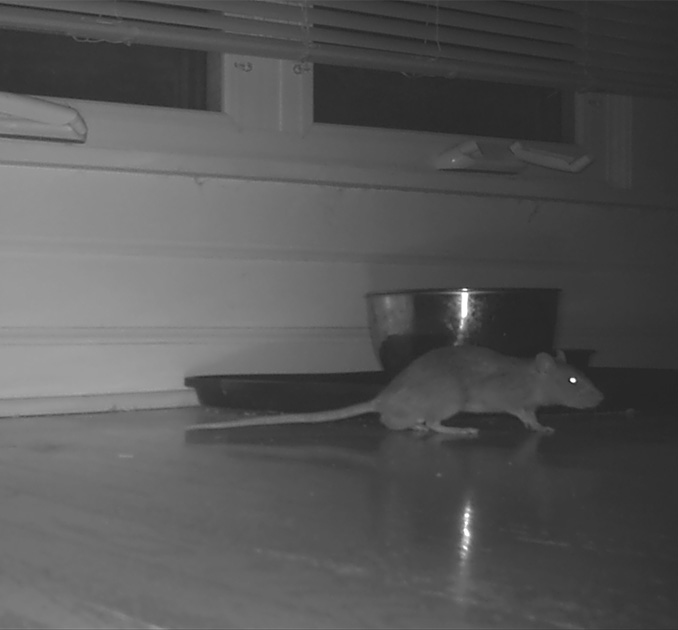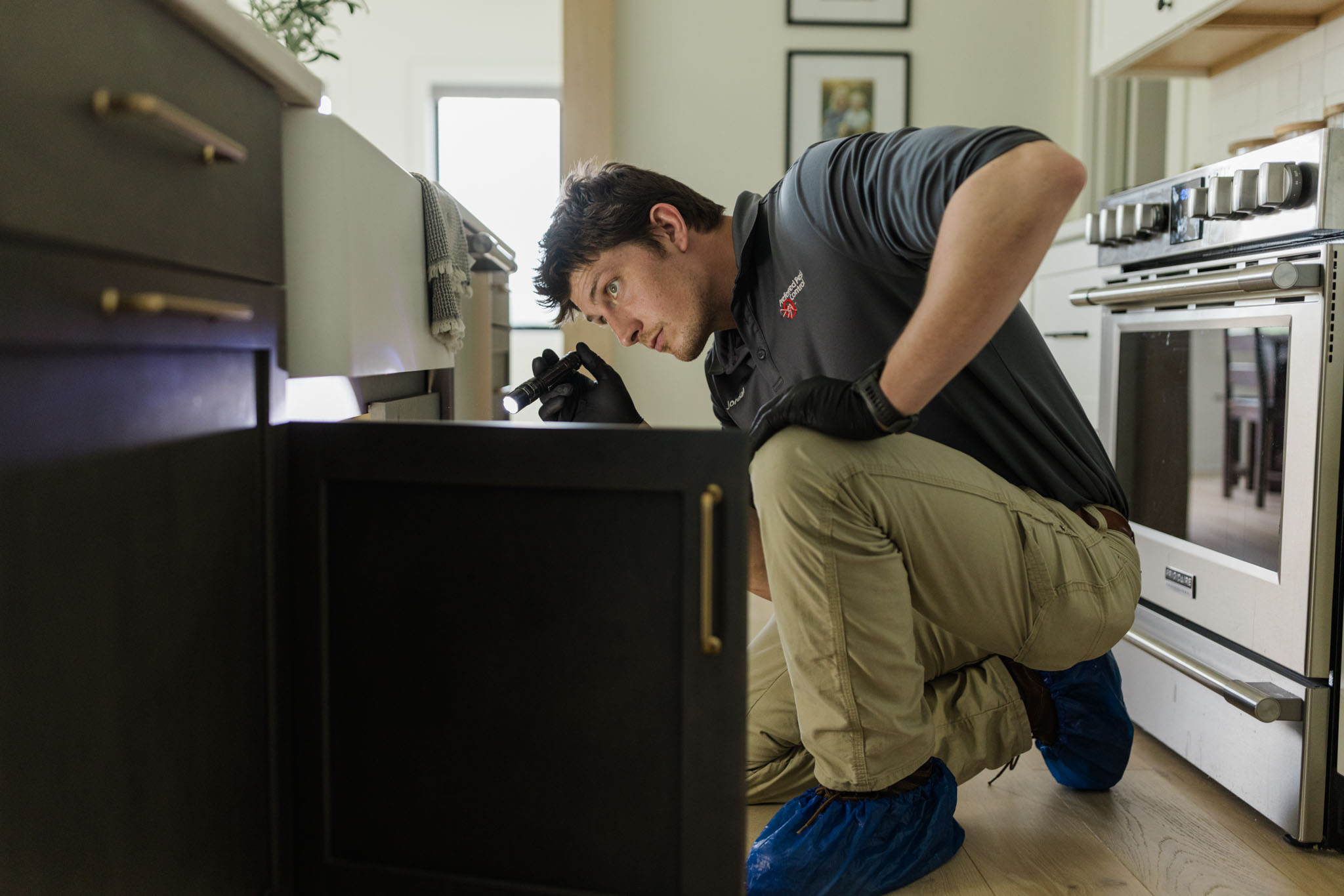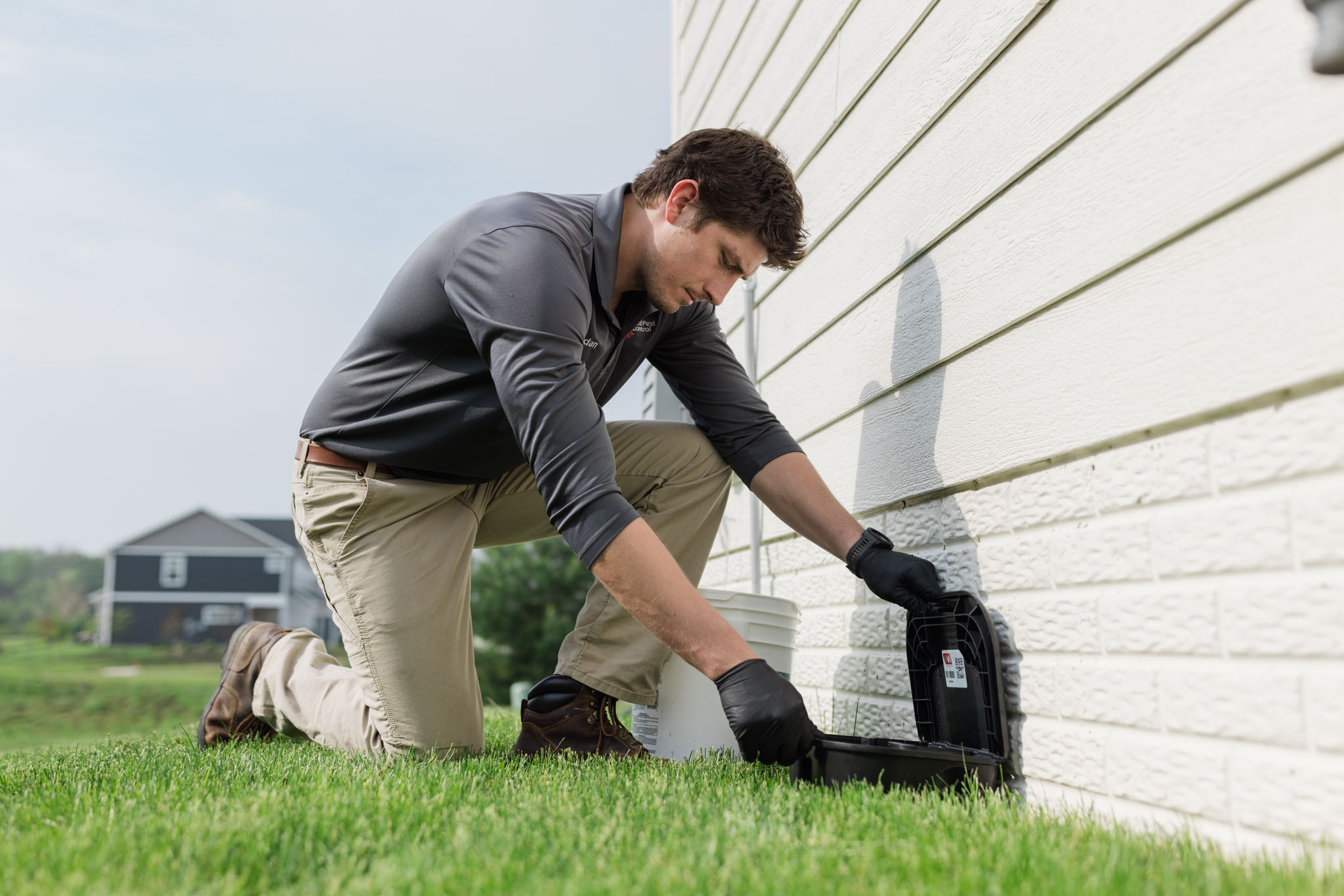Preferred Pest Control Performs Effective Rodent Control in Des Moines
Most rodents are prominent during the fall and winter months when they’re trying to make their way into homes. With Preferred Pest Control’s rodent control services in Des Moines, you can rest assured knowing your home is rodent free. Learn more about our rodent control services and the different ways our exterminators in Des Moines can help you remove and prevent rodents in your home.
Our Treatment Process for Rodent Control in Des Moines
When our exterminators in Des Moines get a call about rodent activity in someone’s home, it’s important we act fast. These pests multiply quickly and can be hazardous to homeowners’ health, so it’s important to get rid of mice and rats right away. We'll discuss our treatment process to get rid of mice and rats safely and successfully to help keep you happy and healthy at home.
Step #1: Identify the Burrow
In homes, rats and mice are most commonly found in the kitchen where there is an abundant food and water supply. Mice can also be found in the attic where they can go unnoticed for an extended period of time. Preferred Pest Control keeps this in mind and uses a variety of methods to spot a rodent problem in a home:
 Search for rodent activity: Our team looks for evidence of droppings, urine stains, gnaw marks on baseboards, and other signs of rodents.
Search for rodent activity: Our team looks for evidence of droppings, urine stains, gnaw marks on baseboards, and other signs of rodents.- Motion sensitive cameras: Since rodents are most active at night, our ability to see them is limited. In certain situations, our team will set up motion activated cameras that are equipped with night vision. If a mouse or rat walks by the camera, a picture is taken. This is a valuable tool that allows us to correctly identify the type of rodent we’re dealing with and know where to place our traps.
Step #2: Set Traps & Safely Remove Rodents
Our team will strategically place various traps or bait stations where there’s likely to be rodent traffic. Our bait stations are tamper-resistant so children and pets cannot get into them, and they can only be opened by our Des Moines exterminators. Depending on the type of rodent we’re trying to catch, our trapping methods could take up to 3 or 4 visits - we’ll explain why when we talk about the differences between rats, mice and voles below!
Step #3: Prevent Future Rat & Mice Infestations
The best way to prevent a future problem is to make sure your exterior is sealed. Preferred Pest Control technicians check the perimeter of the home and make suggestions on how to keep your home safe from pests. Below are a few ways rodents can get inside. Check them out to learn how to better avoid rodents in your home:
- Clawing through the roof: While it may be a daunting climb for a small rodent, our exterminators in Des Moines received a call from a Des Moines homeowner who had a mouse get inside through the roof! It ascended two-stories and once above, it used its claws and teeth to create a small hole in the eaves of the roof. Our Des Moines pest control experts don’t normally see rodents going to these lengths to get inside a home, but it isn’t uncommon for mice to scratch or gnaw their way into a safe space.
- Gaps in doors or windows: Mice are excellent climbers and have been found scaling the sides of homes. If a home has a window that isn’t fully sealed, it creates the perfect entry point for rodents and other pests.
- Cracks in the foundation: Norway rats commonly burrow deep in the ground for shelter and protection. They’ll create tunnelways from the nest to food or shelter found inside homes. This enables them to travel without being seen and enter homes where we may least expect, such as through small cracks or holes in the foundation.
- Crawling through vents or pipes: Make sure you check that all pipes on the exterior are covered to prevent unwanted visitors. It is very common for rodents to enter through dryer vents or even sewer pipes.

Getting Rid of Common Rodents in Iowa
There are three common types of rodents that Preferred Pest Control technicians usually spot in Des Moines: rats, mice and voles. People looking for our services often have a hard time distinguishing which type of rodent they’re dealing with in their home. To help, our experts describe the differences between these rodents, what each looks like and how their different behaviors impact our trapping methods.

Rat Exterminator
These are the largest rodents Preferred Pest Control treats. Rats are all-around bigger than mice, with longer tails and larger bodies. The Norway Rat is most common in Iowa, and has brown or black fur.
Rats are very avoidant of new objects, which makes them more difficult to catch. Our rat exterminators in Des Moines typically use a pre-baiting technique in which we place edible food next to our traps without setting the traps. After the rats are comfortable eating our food bait, we move the food to the trap. Our technicians won’t set the baited traps until the rodents start feeding on the food consistently. By this point the rats’ guard is down and they are typically caught the first night after our team sets the traps.
Mouse Treatment
Mice look the most disproportionate of these three rodents. Their large ears and eyes look out-of-place on their tiny bodies. The House Mouse is usually brown, gray or black in color.
The trapping process for mice is much easier than rats. Mice are very curious and not as suspicious as rats, making them more susceptible to traps. We simply place mouse traps baited with a professional mouse attractant and wait for them to get caught. The mice are typically caught within a day or two. If you come across a mouse in your home, trust the experts at our mouse control company in Des Moines.
Vole Removal
Voles are more of a problem in the springtime and are known for causing damage to lawns and gardens by digging around under the surface. They look similar to mice, but can be distinguished by their smaller tails and more rounded noses.
Since voles are an outdoor rodent, we focus our efforts solely on the exterior. The vole removal process usually takes three service trips. Initially our technician inspects for their trails in the grass. Voles typically run along the same path as they get from one place to another. Once we have identified their trails, our technician place a tamper-resistant bait station near each entry point and apply vole bait directly into burrow openings. A one week follow-up service is performed to replenish the bait stations, and after another week we inspect for any remaining vole activity. If none is observed then the bait stations are removed. If there is still evidence of active voles, our vole removal team will leave the bait stations there for another week.

Preferred Pest Control is Your Trusted Rat Exterminator in Des Moines
Think you might have rodents inside or near your home? Contact our rodent control company in Des Moines today. Whether you’re dealing with rats, mice or voles, our expert technicians have you covered. With our trapping methods and decades of experience, our exterminators will keep your home free from pests! Call us now at (515) 276-7277 to schedule an appointment.